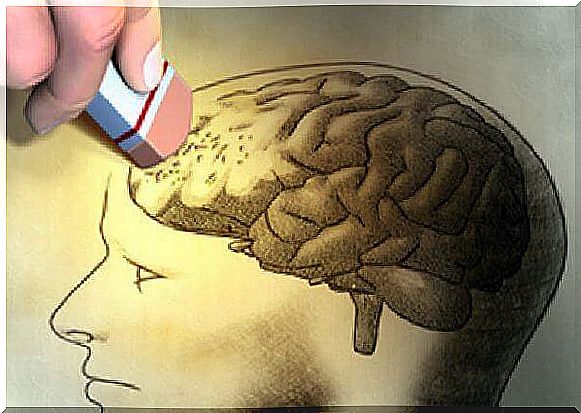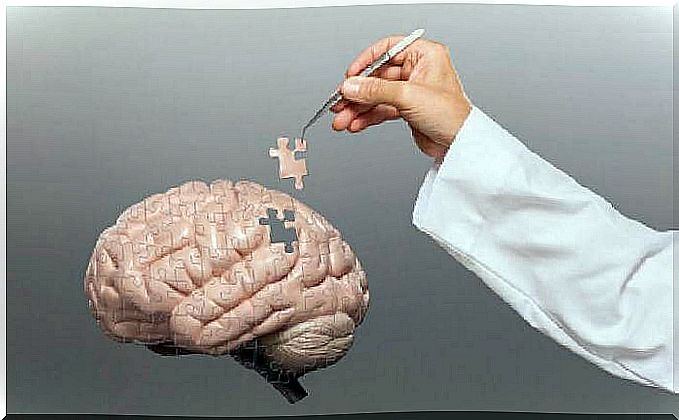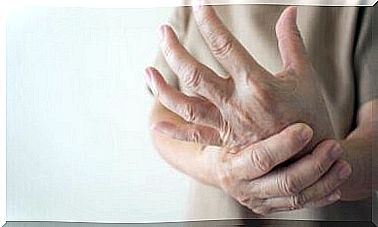Sleeping On The Side Reduces The Risk Of Alzheimer’s And Parkinson’s

According to a study carried out by the University of Stony Brook in the United States, the position in which we sleep could have effects on our neurological health. According to research, sleeping on the side or in a lateral position would help our body to eliminate waste that contribute to increasing the risk of contracting various diseases, including Alzheimer’s and Parkinson’s.
Although these are still rather isolated discoveries, the doors are open to future studies on the causes and possible preventive measures aimed at reducing the risk of developing this type of disease. While the conclusions are relatively complex, there are some good lessons to be drawn. Let’s find out together how the studies were carried out.

How was the research carried out?
Thanks to functional magnetic resonance imaging, the researchers were able to observe how the remains of the cerebrospinal fluid were full of amyloid proteins and tau proteins, substances which, if accumulated, seem to be directly involved in increasing the risk of contracting Alzheimer’s and Parkinson’s.
The analyzes therefore revealed that the brain cleaning system works much more efficiently in a lateral position rather than supine (mouth up) or prone (mouth down).
It is curious that, apparently, this is the most common position in both the human and animal populations. In fact, very few people claim to sleep on their backs or on their stomachs, which leads us to think that it is a natural strategy inherent in our adaptation system.
Although these findings have not yet been applied to the human case specifically, the results are promising. The experiment has shed light on a still little known aspect, that of the biology of the restorative function of sleep with a view to reducing the risk of contracting neurodegenerative diseases.

What is there to know about Alzheimer’s and Parkinson’s?
Both diseases share, within certain limits, a histopathological characteristic: the presence of neuronal and biochemical waste inside the brain of those affected. However, these are two multifaceted diseases.
Alzheimer’s
It is estimated that between 2 and 5% of the population over the age of 65 have Alzheimer’s type dementia; the percentage increases a lot (25%) from the age of 80, and reaches 90% after the age of 90. The disease can, however, present the first symptoms already at the age of 40.
However, definitive confirmation of the diagnosis only occurs after death. During autopsy, the brains of affected individuals tend to reveal fewer cortical neurons, large amounts of senile plaques, neurofibrillar degeneration, vascular granule, and increasing accumulation of lipofuscin.
The disease initially presents insidiously, and includes short-term memory loss and loss of concentration and disorientation among the initial symptoms. In addition, changes can occur in the personality of the affected subject, who can be apathetic, selfish, rude, rude, irritable, aggressive or rigid, even if these attitudes are not normally part of his character.

In addition to the findings that emerged from the study discussed in the previous paragraph, others need to be considered
, by controlling which they can cause a delay or even prevent their appearance:
Aging is the main risk factor for the disease. It is worth pointing out that the female population is more likely to contract Alzheimer’s, perhaps due to the longer life expectancy of women.
- High levels of cholesterol or homocysteine protein.
- Diabetes.
- Cranio-brain trauma and Down’s Syndrome.
- Chronic psychological stress.
- Hypertension and smoking.
At the same time, some factors have been identified that seem to reduce the risk of contracting it: a high level of education, a good state of physical and mental fitness ( mens sana in corpore sano ), achievable with participation in leisure activities, practice regular exercise and compliance with a Mediterranean diet based on antioxidants.
Although the causes of Alzheimer’s are still unknown, various theories are hypothesized, some of which are impossible to prove or can only be traced back to a few cases. The genetic hypothesis, for example, accounts for only 5% of cases.
Other hypotheses refer to a possible influence of lentiviruses or a lack of acetylcholine. Toxic levels of metals such as aluminum and silicon have also been found within the brains of patients.

Parkinson’s disease and associated dementia
Parkinson’s disease is a slow and progressive neurological disorder characterized by shaking, stiffness, motor slowdown, and postural instability.
The disease mainly affects the basal ganglia, the internal structure of the brain that also deals with the coordination of movements. Autopsies of people with Parkinson’s show clear signs of neuronal loss and Lewy bodies (abnormal protein aggregates that develop within nerve cells) in the substantia nigra.
Such is the relationship between the different types of dementia that autopsies of some Parkinson’s patients have revealed signs of Alzheimer’s and Lewy body dementia.
As for Parkinson’s disease, as many as 30% of the population develops this disease, which tends to present itself at an advanced age (starting from 70 years) and mainly affects men.
Parkinson’s-associated dementia initially manifests itself through difficulty recognizing the shape, place or position of objects, difficulty communicating fluently, and of course, both long and short-term memory loss (the patient may forget how riding a bicycle as well as the conversation he had 30 minutes earlier).
The risk factors are similar to those of Alzheimer’s, and once again the importance of maintaining a healthy lifestyle and the balance between mental and physical health is highlighted.
Although the side sleeping strategy is not yet a certified preventive method, keep it in mind in your daily self-care. It is amazing to think how this simple gesture can decrease the risk of contracting Alzheimer’s and Parkinson’s.









